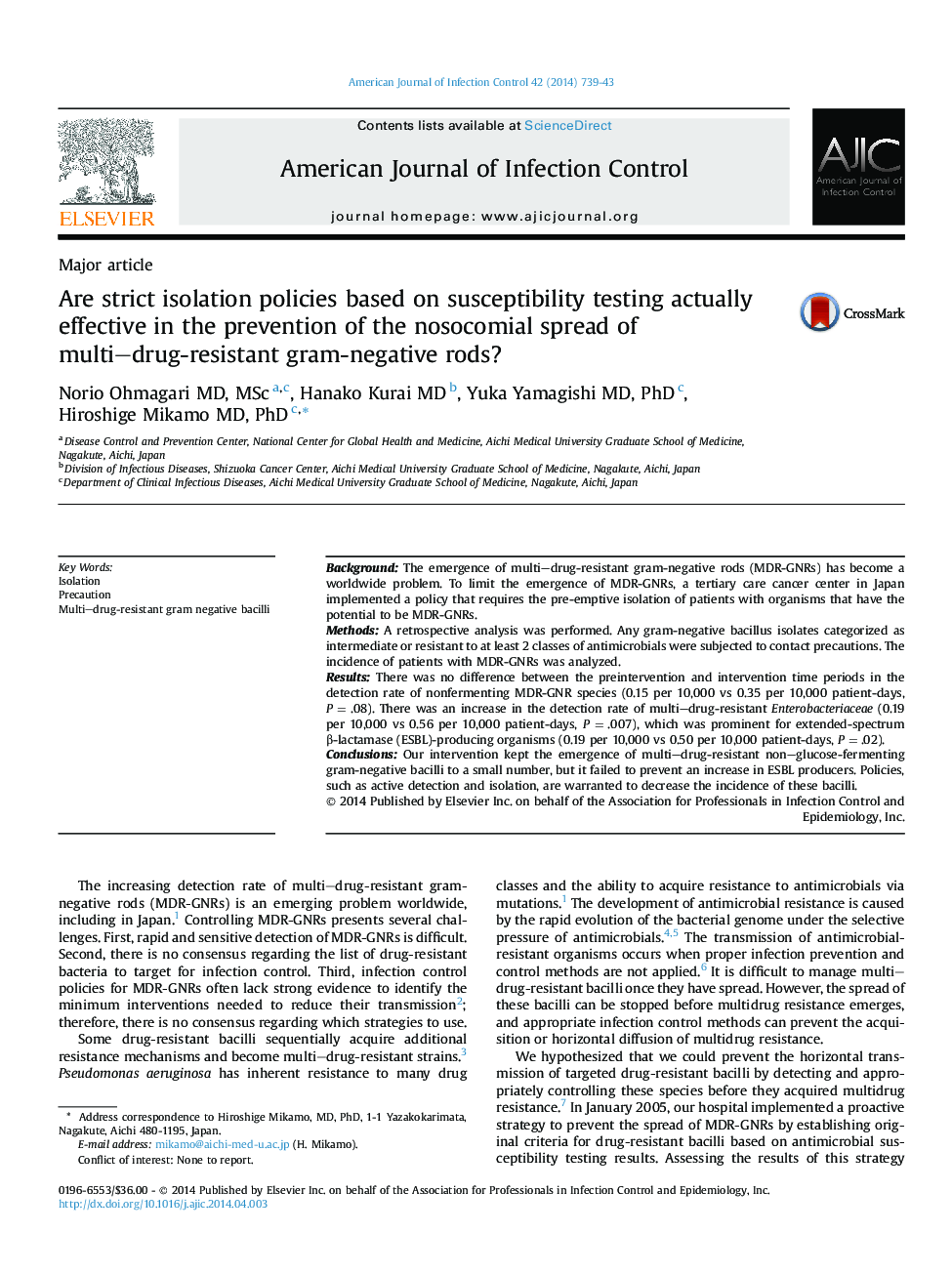| Article ID | Journal | Published Year | Pages | File Type |
|---|---|---|---|---|
| 2636965 | American Journal of Infection Control | 2014 | 5 Pages |
BackgroundThe emergence of multi–drug-resistant gram-negative rods (MDR-GNRs) has become a worldwide problem. To limit the emergence of MDR-GNRs, a tertiary care cancer center in Japan implemented a policy that requires the pre-emptive isolation of patients with organisms that have the potential to be MDR-GNRs.MethodsA retrospective analysis was performed. Any gram-negative bacillus isolates categorized as intermediate or resistant to at least 2 classes of antimicrobials were subjected to contact precautions. The incidence of patients with MDR-GNRs was analyzed.ResultsThere was no difference between the preintervention and intervention time periods in the detection rate of nonfermenting MDR-GNR species (0.15 per 10,000 vs 0.35 per 10,000 patient-days, P = .08). There was an increase in the detection rate of multi–drug-resistant Enterobacteriaceae (0.19 per 10,000 vs 0.56 per 10,000 patient-days, P = .007), which was prominent for extended-spectrum β-lactamase (ESBL)-producing organisms (0.19 per 10,000 vs 0.50 per 10,000 patient-days, P = .02).ConclusionsOur intervention kept the emergence of multi–drug-resistant non–glucose-fermenting gram-negative bacilli to a small number, but it failed to prevent an increase in ESBL producers. Policies, such as active detection and isolation, are warranted to decrease the incidence of these bacilli.
